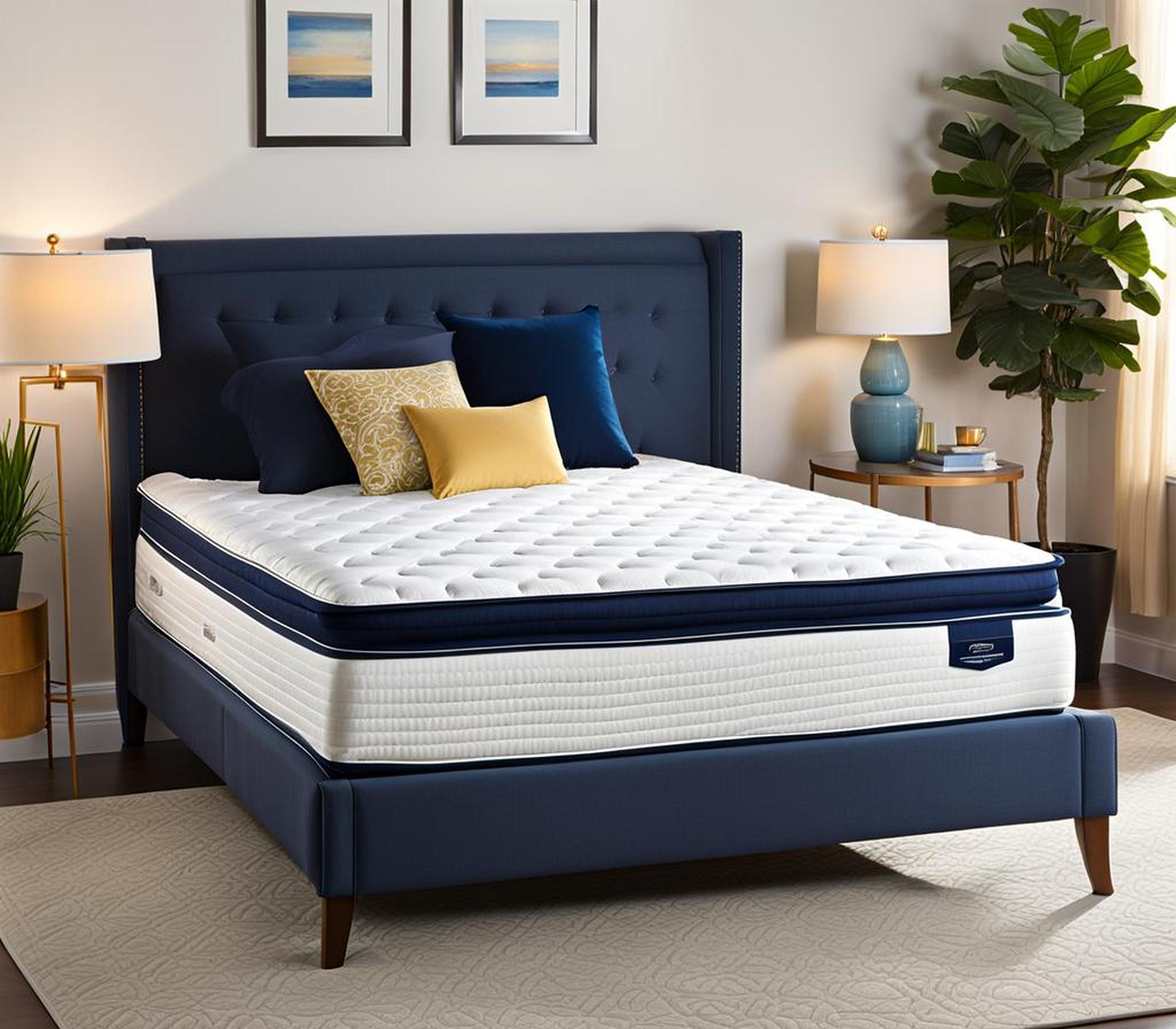If you suffer from ongoing back pain, your mattress could be making it worse. The right bed is crucial for keeping your spine properly aligned and minimizing discomfort while you sleep. But can pillow top mattresses actually help chronic back issues? Or do their ultra-plush layers cause more harm than good?
We’re breaking down the key benefits of pillow tops for easing back aches. But we’re also exploring reasons they may potentially exacerbate pain. Keep reading for the full truth on these popular beds, and how to choose what’s best for your body.
What are pillow top mattresses?
Pillow tops get their name from an extra layer of padding sewn on top of the mattress. This creates a soft, pillow-like feel. Many sleepers love this cushioning comfort.
Underneath lies the main mattress construction. This is commonly an innerspring or all-foam base. The pillow top itself also contains foams and fibers like memory foam or polyester. Some key perks include pressure relief and contouring ability. But some downsides are they may sleep hot or lack adequate support.
Connection to back pain relief
Back pain impacts up to 31 million Americans at any given time. From poor posture to injuries, various issues can cause chronic discomfort.
Your mattress plays a crucial role. If it fails to keep your spine properly aligned, this stresses muscles and joints. Choosing an unsuitable mattress can certainly contribute to or worsen pain.

Pillow Top Mattress Features for Back Pain
Pillow tops do offer alluring qualities meant to minimize aches. But whether they truly deliver depends on your needs and preferences.
Memory foam conforming ability
Many pillow tops contain memory foam in their construction. This material is prized for its close conforming. As you lie down, it molds to the body’s natural contours.
For back pain sufferers, this can promote healthy spinal alignment. By filling in gaps around your frame, it keeps your spine neutrally positioned. This even distribution of weight prevents soreness from pressure buildup.
Adjustable firmness levels
Since pillow tops make mattresses softer, companies offer choices in firmness. This ranges from plush soft to more supportive.
Side sleepers often need a medium softness to cushion shoulders and hips. But firmer choices work better for preventing back sleepers’ spines from bowing.
Look for customizable support regions if you and your partner have different needs.
Targeted zoned support
Reinforcing the center third of the mattress is essential for spinal care. This keeps your mid and lower back uplifted in proper posture.
Some pillow tops achieve this with firmer foams or added coils here. Others utilize removable inserts or underneath support layers.
Cooling gels and airflow
Thick foams can retain heat, causing night sweats that disrupt sleep. Newer designs tackle this with cooling gels, perforations, or special covers that feel cool to the touch.
Restful slumber is vital for back rehabilitation. So temperature regulation helps you achieve uninterrupted rest.
Considerations for Optimal Spinal Comfort
While pillow tops aim for pain and pressure relief, individual factors determine whether they deliver. Keep these considerations in mind while mattress shopping.
Identifying your problem areas
Do you mainly suffer from lower back pain when standing or sitting? Or is it centralized to your upper back and shoulders?
Chronic conditions like spinal stenosis or herniated discs also produce different symptoms. Recognizing where your pain stems from guides appropriate support.
Acute flare-ups after injuries likewise have distinct needs for realigning affected areas.
Finding best sleeping positions
How you sleep plays a substantial role in spinal comfort. Back and stomach positions often benefit most from firmer beds preventing sagging.
Side sleeping requires more cushioning around shoulders and hips. But too much plushness also lets the spine bend sideways.
Pay attention to maintaining neutral neck, back, and hip positioning when testing mattresses. Also use supportive pillows to fill in gaps.
Your weight and body type
Heavier frames require thicker comfort layers so they don’t bottom out. But excessively soft beds for larger builds can strain backs.
Lighter sleepers may feel swallowed up by the same surfaces. So balancing adequate surface depth with proper firmness levels for your weight helps.
Allergy and odor concerns
Memory foam and poly foams often off-gas volatile compounds when new. For sensitive sleepers, this causes respiratory irritation.
Manufacturers now use purification methods and plant-based materials to minimize these issues. Removable covers are also useful for regular washing to prevent allergens building up.
Trial periods and guarantees
Don’t underestimate the adjustment period when switching mattresses. Give your body at least 2-4 weeks to adapt to new support feels before judging comfort.
Reliable brands offer 100-night trials to ensure the bed works for your back. Return policies give you a safety net for free replacements or refunds if it’s unsuitable.
The plush layers of pillow tops aim to relieve pressure points causing back aches. Features like memory foam also provide contouring to align the spine.
However, ample support underneath is essential to prevent sagging. So opt for customizable or zoned options with firmer foams reinforcing the center. Cooling components and washable covers also promote recovery through better sleep.
While pillow tops can aid chronic back pain issues, the most suitable choice still depends on your sleeping position, exact pain location, body type, and more. Testing out mattresses first and utilizing return policies gives you the best chance for finding optimal comfort.
